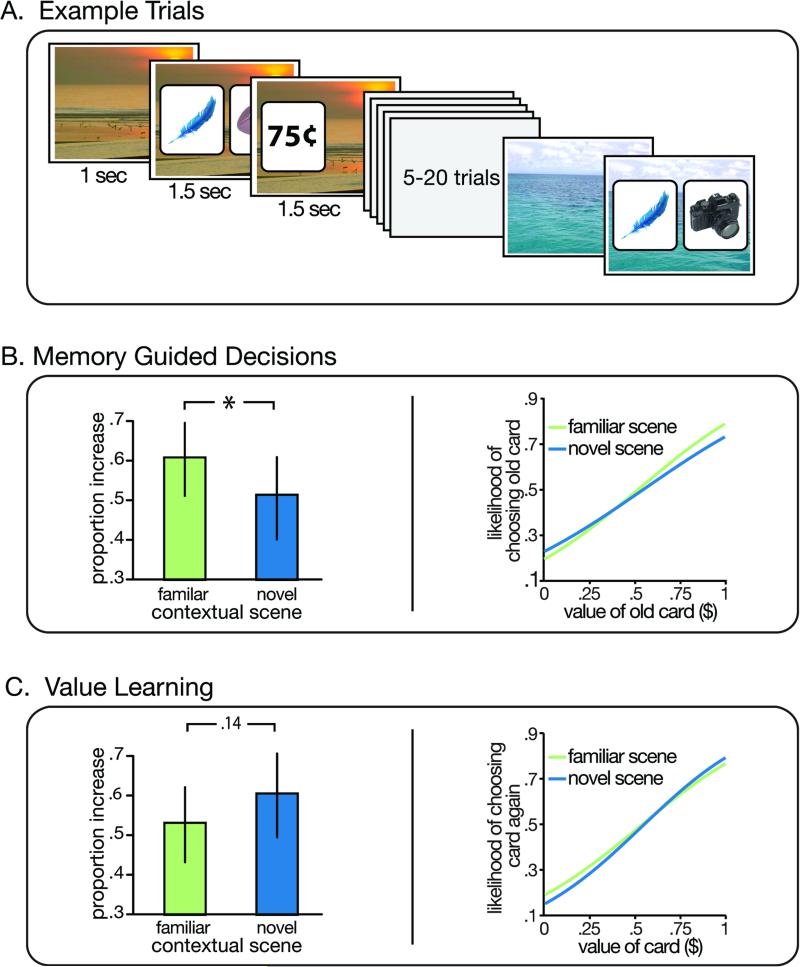Figure 2.
Experiment 1 design and results. (a). Participants chose between two cards, each of which had an object on one side and a value on the other. After a card was selected, it flipped over to reveal the amount of money won. Previously selected cards were re-presented once along with a ‘new’ card. Each decision was made in the context of either a novel or a familiar scene. (b). ‘Familiar’ scenes increased the influence of past experience on choices. The left graph plots how well the value of an ‘old’ card predicted participants’ choices (old vs. new card) for decisions made in the context of ‘familiar’ vs. ‘novel’ scenes. Statistical comparisons were performed by testing the interaction between ‘old’ card value and decision-scene. The right graph plots the model estimates of the likelihood of choosing ‘old’ cards of different values in the context of ‘familiar’ or ‘novel’ scenes. (c). The effect of novel scenes on value learning. The left graph plots how well the value of an ‘old’ card predicted participants’ choices (old vs. new card) for ‘old’ cards that were originally selected in the context of ‘familiar’ vs. ‘novel’ scenes. Statistical comparisons were performed by testing the interaction between ‘old’ card value and learning-scene. The right graph plots model estimates of the likelihood of re-selecting ‘old’ cards of different values that were originally selected in the context of ‘familiar’ vs. ‘novel’ scenes. Error bars represent 95% confidence intervals around the estimate. *p<.05

